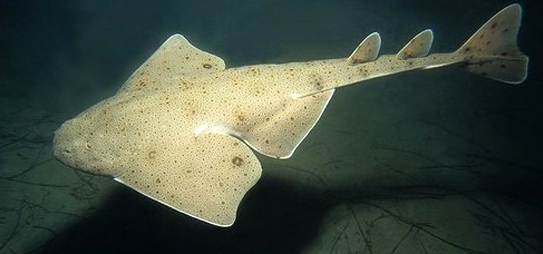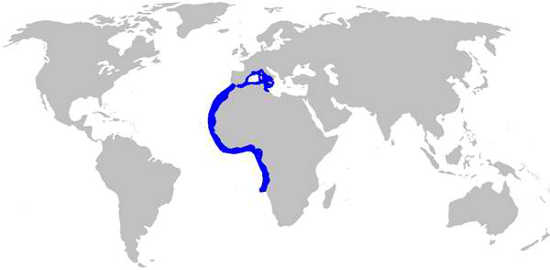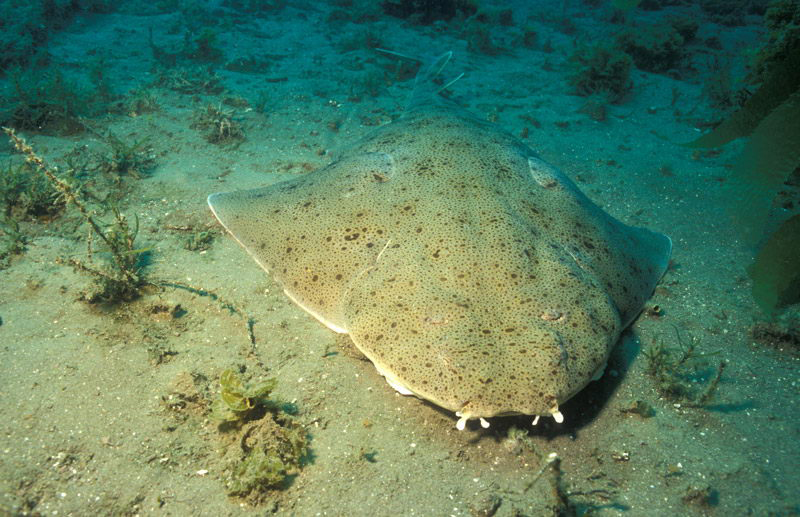Sawback Angelshark

The sawback angelshark (Squatina aculeata) is an endangered, offshore species that was once common throughout the subtropical waters of the Mediterranean Sea and the eastern Atlantic Ocean. This shark also goes by the names monkfish, spiny angelshark, or sawback angelshark.
It belongs to the angelshark and sand devil family (Squatinidae). Many observation records from fishing reports are only to the level of genus (Squatina sp.), as this shark is difficult to identify to species.
Intensive fishing across its range has heavily impacted this shark. Populations have declined so much that it now appears to be wiped out from much of the northern Mediterranean and off West Africa, and it is rare in most of its remaining range. For example, local fishermen and observers of industrial fishing now report very few catches of this angelshark.

Sawback Angelshark Facts
The name of this species refers to its large pectoral fins that stretch wide, like wings.
Sawback angelsharks have a flat, blotchy gray body that provides great camouflage. That is useful because they spend much of their time lying still, buried in the sandy ocean bottom.
These sharks measure about 1.25m (4.2 ft) on average, and can grow up to about 2 m (6.7 ft) long.
Habitat and Range
At one time this was a common species throughout large areas of its coastal sediment habitat. These bottom dwellers prefer warm-temperate and tropical waters. They tend to hang out in the intertidal zone, on or near the muddy seabed at depths of about 30 to 500 m (100 to 1700ft). However they have been reported down to 1,400 m (4660 ft).
Sadly this species has essentially been wiped out from much of its former range, especially in the Mediterranean. Declines have specifically been reported from studies off the Balearic Islands (Spain), where this species once thrived but may now be absent.

Feeding Behavior
This species is an important predator in its ecosystem at the ocean bottom. Angelsharks ambush their prey from their hiding places on the ocean bottom. They can remain still for weeks, being patient until prey comes within striking range!
The diet is known to include small sharks, many kinds of bony fish, and crustaceans.
Social Behavior
Very little is known about the biology of this species. However, it seems that dispersal rates are quite low – this means that they are easily depleted in local areas that experience fishing pressure.

Breeding
This is an Ovaviviparous species, meaning that the eggs hatch inside the mother’s body. There is no placenta to nourish the pups; instead, the babies feed on yolk sacs.
At birth, the neonate sharks are about 32 cm (12.6″) long and weigh about 300 g.
Life span, age at maturity, gestation time, and other basic population information remain unknown.
Read More: FULL Article at:
https://www.sharksider.com/sawback-angelshark/
